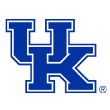As per usual, the first weekend of the 2018 NCAA tournament was delicious, wild and fun. There were major upsets, minor upsets, a first-time upset, major-conference carnage, blowouts, surprises, comebacks, collapses, buzzer-beaters, brackets busted, big shots sent home and a 98-year-old nun. In other words, we had an absolute blast.
Of course, instead of just sitting back and enjoying the roller-coaster ride, we tried to explain it when no explanation was needed. This is the NCAA tournament -- it needs no explanation. Yet we immediately heard proclamations that the Sweet 16 was "unprecedented" and that we have never seen such volatility, such parity. We also decided to proclaim this season the "new normal." Then Florida State's Leonard Hamilton explained the upsets in this year's tournament as a "revolution."
Sorry to break this to everyone, but with the exception of a couple of really neat and fun things that happened in this year's NCAA tournament, this is not the first time any of this has happened. If there has been a revolution, it happened well over 30 years ago. It's just that nobody noticed -- or nobody cared to put it into context. Well, that is why you consult The Bilas Index: to put into context that which others ignore or cannot comprehend.
"Unprecedented" means never done or known before. With that in mind, here is what was truly unprecedented about the first weekend of the 2018 NCAA tournament: a 1-seed lost to a 16-seed for the first time when UMBC beat No. 1 Virginia, the Neil Armstrong moment of this sport's tournament, and none of the top four seeds in the South Region advanced to the Sweet 16. In past years, the top three seeds in a region have failed to advance, but never the top four. Other than that, all of this has happened before. In fact, there has been more carnage in past years of the NCAA tournament's first weekend.
"Revolution" means, in this context, a sudden or marked change in something. Has there been any real change since the NCAA tournament expanded to 64 teams in 1985? The facts indicate that there has not been. Two double-digit seeds advanced to the Sweet 16 this year, Loyola-Chicago (11) and Syracuse (11). Many opined that they have never seen such craziness. Yet three double-digit seeds reached the Sweet 16 in 12 separate seasons (1985, 1986, 1990, 1991, 1997, 1998, 2001, 2002, 2008, 2010, 2012, and 2013). In 2011, four double-digit seeds reached the Sweet 16, double that of this year. In 1999, a record five double-digit seeds reached the Sweet 16. This year, while fun as hell, is not particularly crazy in that regard, is certainly not unprecedented and is hardly a revolution.
It seemed like there were more buzzer-beaters than ever in the last 10 seconds of games. There were five such shots hit, by Loyola-Chicago's Donte Ingram and Clayton Custer, Houston's Rob Gray, Michigan's Jordan Poole and Nevada's Jost Hall. The most buzzer-beaters through the Sweet 16 is six, accomplished six times, the last of those in 2016.
This year, if you add up all of the seed numbers for the Sweet 16 teams, the seed total is 85. That seems high, and it is. Absolute chalk advancing would yield a seed total of 40. Yet in the 2000 NCAA tournament, the seed total for the Sweet 16 was 85, the same as this year. In both 1990 and 1999, the seed total for the Sweet 16 was 88, more than this year. In 1986, the seed total for the Sweet 16 was 89, the highest ever. Apparently, if there was a revolution, it started in the 1980s, you know, when there was "parity" in college basketball.
Kentucky benefitted more than any team from the carnage and will not face a top-six seed en route to the Final Four, which seems unprecedented. It is not. The same thing happened in 1986, 1990 (for two teams in the same Final Four), 1991, 1993, 2001 and 2008.
And, of course, the first-weekend upsets were also attributed to -- or, if you like, blamed -- on the "one-and-done." Yet as shown above, there were more upsets in several tournaments prior to this one and prior to the "one-and-done" era. Lastly, lest we forget, the two programs known most for "one-and-done" players, Kentucky and Duke, are still playing.
What is revolutionary about this season is The Bilas Index, the most reliable accounting of basketball accomplishment known to man. Here, for your enjoyment and basketball education, is the Sweet 16 edition of The Bilas Index. As always, you're welcome.

1. Duke Blue Devils
The Blue Devils are the most talented team. And they are healthy. No team has trended up more than Duke has since Feb. 8, when the Blue Devils lost on the road to North Carolina. Since then, Duke has been Syracuse South, playing zone defense as its primary defense. Since that time, Duke has become one of the nation's best defensive teams. Over its past 11 games (since Feb. 11), Duke has allowed 91.1 points per 100 possessions, the third-best defensive efficiency in Division I. In that span, Duke has played zone defense 93 percent of the time, compared to 29 percent earlier in the season. Duke is the only team in the nation to rank in the top 10 in both adjusted offensive and defensive efficiency. Duke has scored at least 85 points in back-to-back NCAA games for the first time since 2004, when it lost to UConn in the Final Four. Duke won its first two tournament games by 20-plus points. The other two times that happened, the Blue Devils reached the Final Four. Marvin Bagley III is the difference-maker. He has scored 44 points in the NCAA tournament, fourth-most in a player's first two career NCAA tournament games in Duke history. Duke rebounds 39 percent of its missed shots, the highest offensive rebounding percentage in Division I. The Blue Devils average 15.7 second-chance PPG, most among major-conference teams. Duke has 30 second-chance points in the NCAA tournament, tied for most among Sweet 16 teams (West Virginia).

2. Villanova Wildcats
West Virginia needs to guard the 3-point line. Villanova averages 86.9 points per game, most in the nation. The Wildcats lead Division I in adjusted offensive efficiency (128.1) and adjusted net efficiency (35.7). The Wildcats are off to one of the best 3-point-shooting starts in NCAA tournament history and are the first team to make at least 14 3-point field goals in consecutive NCAA tournament games. They have made 31 3-point field goals in this tournament, second-most by any team in a two-game stretch in NCAA tournament history. Villanova has made 45.6 percent of its 3-pointers in the NCAA tournament, the best percentage among Sweet 16 teams. Mikal Bridges is 6-for-8 on contested 3-pointers, tied with Duke's Grayson Allen for the most in the tournament.

3. Kansas Jayhawks
Kansas is a perimeter-oriented team that can really shoot it. Although Devonte' Graham has not been on fire in the NCAA tournament -- yet -- Malik Newman has been. In his past five games, Newman is averaging 22 points per game, including 19 points per game in the NCAA tournament. Udoka Azubuike is shooting 77.5 percent from the field this season, best in Division I and on pace to be second-highest in Division I history. Kansas was much more efficient offensively in the second round with Azubuike on the floor. In order to beat Clemson and Duke, Azubuike will have to remain on the floor and be a significant presence. Where Kansas is vulnerable is on the glass, as the Jayhawks are 293rd in defensive rebounding percentage.

4. Gonzaga Bulldogs
The Bulldogs are in the Sweet 16 for the fourth straight season, the longest such streak in the country. If Gonzaga reaches the Final Four, it will set a Division I record for victories in a four-year span. The Bulldogs average 84.2 points per game, on pace to be the highest scoring average in school history. Gonzaga is outscoring opponents by 16.7 points per game this season, the second-highest scoring differential in Division I. Gonzaga has very good balance, with Jonathan Williams leading the way in scoring and rebounding. But Zach Norvell Jr. has been the hottest Zag of late. Against Ohio State, Norvell Jr. had career highs with 28 points and 12 rebounds, becoming the first Zag with 25 and 10 in an NCAA tournament game. The Zags' top 3-point threats are Josh Perkins, Norvell Jr. and Silas Melson, all with more than 60 3s on the season.

5. Michigan Wolverines
Under John Beilein, Michigan has been known as an efficient, low-turnover offensive team that struggles at times on the defensive end and on the glass. This season, it has been different. The Wolverines are still a very good, low-turnover offensive team, but they are also very good defensively and a terrific defensive rebounding team. Michigan has won 11 straight games, its most since a 16-0 start in 2013, the last time Michigan advanced to the Final Four. Based upon efficiency numbers, Michigan has been the second-best defensive team in the NCAA tournament to Kansas State and has allowed only eight second-chance points per game this season, third-fewest among major-conference teams. Michigan is allowing only seven second-chance points per game in the NCAA tournament. The only issue for Michigan is free throw shooting, which is an anemic 65 percent.

6. Kentucky Wildcats
The Wildcats have been to the Sweet 16 in seven of nine seasons under John Calipari. They have reached the Elite Eight in six of those seven seasons, most in Division I since 2010. Kentucky has become a vastly different offensive team over its past 10 games. In that span, Kentucky is averaging more than 81 points per game and shooting almost 50 percent from the floor and better than 43 percent from deep. After averaging 13 points per game this season, Shai Gilgeous-Alexander is averaging 23 points per game in the NCAA tournament, second only to West Virginia's Jevon Carter.

7. West Virginia Mountaineers
The Mountaineers average 20.2 points per game off turnovers, most among major-conference teams. They have averaged 22.0 points per game off turnovers in the NCAA tournament, most in the field. Jevon Carter makes this team go. He has scored more than 20 points in each of West Virginia's two NCAA tournament games. Carter has four career 20-point games in the NCAA tournament, trailing only Jerry West (eight) for most in school history. Carter averages 3.0 steals per game, second in Division I, and has recorded 11 steals in West Virginia's first two games of the NCAA tournament, four more than any other player in the field. Carter has at least 20 points, 5 assists and 5 steals in each of West Virginia's NCAA tournament games, which makes him the first player with multiple such games in NCAA history.

8. Purdue Boilermakers
With Isaac Haas, Purdue is among the top four teams in The Bilas Index. Without him, Purdue takes a major hit. Haas, Purdue's second-leading scorer at 14.7 points per game, fractured his elbow in the first round. His status is up to the engineers of Purdue to manufacture a brace that is NCAA-compliant. Haas leads the nation in post-up points. Without him, Purdue does not have a post threat that requires a double-team or can pass as well out of the post. Purdue has survived without Haas by hitting its open shots. The Boilermakers are 22-for-25 on uncontested shots in the NCAA tournament (88 percent), best among Sweet 16 teams. That includes 9-for-11 on open 3-point attempts.

9. Texas Tech Red Raiders
Keenan Evans is averaging 22.5 points per game in the NCAA tournament, including 16.5 points per game in the second half. Evans was injured late in the regular season but is back to 100 percent. This makes Texas Tech a difficult team to beat. In the past five games, Evans is averaging 21.2 points per game on better than 54 percent shooting. Texas Tech has the third-best adjusted defensive efficiency in the nation, behind only Virginia and Cincinnati.

10. Texas A&M Aggies
The Aggies are the most intriguing team remaining. Texas A&M was a top-five team earlier in the season, but injury and suspension slowed the train down. Against North Carolina, we saw the Texas A&M team we expected all season. The Aggies are big and dominant in the low post, with Tyler Davis and Robert Williams, two excellent rebounders and rim protectors. Guard play has been an issue, but lefty freshman TJ Starks has taken over and is very talented and fearless. DJ Hogg was vilified earlier in the year for his suspension, but Hogg is one of the nation's best shooters and is big and long and can see over defenses. Texas A&M can switch up defenses, and its length and bulk inside are formidable.

11. Clemson Tigers
When Clemson's best and most versatile player, Donte Grantham, went down with a season-ending injury against Notre Dame, many thought Clemson was done. Well, apparently, nobody told Clemson. The Tigers have excellent guards who can really shoot, led by transfers Marcquise Reed and Shelton Mitchell and sharpshooting Gabe DeVoe. Clemson is also a good defensive team, holding opponents to 32 percent in the NCAA tournament, the best field goal percentage defense in the field. In the second round, Auburn missed 18 straight shots at one point against Clemson. The Tigers are also plus-34 in the paint in the NCAA tournament, the second-largest differential behind that of West Virginia (plus-44). Clemson is sixth in Division I in defensive efficiency this season and third among Sweet 16 teams behind Texas Tech and Michigan.

12. Nevada Wolf Pack
The Wolf Pack were down 22 points to Cincinnati in the second half and came back to win. Not even that was unprecedented. Duke came back from 22 down at halftime in the 2001 Final Four, and BYU came back from 25 down against Iona in 2012. Yet it was still a delicious comeback (or collapse, if you are a Cincinnati fan). Nevada is an outstanding offensive team, ranking among the nation's most potent offenses. Even without point guard Lindsey Drew, lost in February to an Achilles injury, Nevada continues to put points on the board. One of the reasons is major-conference talent. While most lament transfers as being difficult for mid-majors, "down transfers" are quite helpful to most. Nevada has Kendall Stephens (Purdue) and twins Caleb and Cody Martin (NC State) carrying most of the offensive load. Caleb was second in the Mountain West in scoring, and Cody is averaging 20 points per game in the NCAA tournament. Jordan Caroline is one of the most productive players in the Mountain West, and the Wolf Pack are among the lowest turnover teams in Division I.

13. Florida State Seminoles
As per usual, Florida State is long and athletic and very good in transition. The Seminoles are not the defensive team Leonard Hamilton has had in the past, but they have shown the ability to defend in short stretches. Braian Angola and Terance Mann are the most consistent performers, but Florida State has a number of players who can give you problems on a given day. In their first two NCAA tournament games, the Seminoles averaged 43.5 bench PPG, 12.5 more than any other team in the field. Florida State's bench has scored 61 percent of its points in the tournament. For Florida State to beat Gonzaga and Michigan, the Seminoles will have to compete on the glass and on the defensive end -- and do it consistently.

14. Syracuse Orange
The Orange have some good players, led by Tyus Battle and Frank Howard. The issue is whether Syracuse can score enough points to beat Duke. Syracuse averages 66.7 points per game, on pace to be its fewest since the 1962-63 season, when Jim Boeheim was a walk-on for the freshman team. The Orange are 7-1 as a double-digit seed in the NCAA tournament, the best such win percentage all time. They reached the 2016 Final Four as a 10-seed. Oshae Brissett has scored 53 points in Syracuse's three NCAA tournament games, the second-most by a Syracuse freshman through his first three games (Billy Owens, 58). Syracuse struggled against Duke's zone defense earlier this season, shooting 31.8 percent from the field, including 28.6 percent from 3-point range.

15. Loyola-Chicago Ramblers
The Ramblers are very good and have won a school-record 30 games behind the terrific play of Clayton Custer and Donte Ingram. Loyola-Chicago is an excellent passing team; the Ramblers have assisted on 75 percent of their field goals in NCAA tournament play, best among remaining teams. On the season, Loyola-Chicago shoots better than 50 percent from the field, third in Division I. The Ramblers have allowed only 62 points per game this season, fifth-fewest in Division I. In the NCAA tournament, Loyola-Chicago continued that defense, allowing only 62 points per game in its first two games. Plus, Loyola-Chicago has Sister Jean. Pretty cool.

16. Kansas State Wildcats
The Wildcats have been playing short-handed in the NCAA tournament, missing Dean Wade for the first two games. No team benefitted more from UMBC's win, as Kansas State had to beat only an 8-seed and a 16-seed to reach the Sweet 16. That is unprecedented, thanks to the UMBC upset of Virginia. Wade and Barry Brown both average more than 16 points per game, so Wade's presence in the lineup makes a huge difference for Kansas State. The Wildcats have a solid defense, allowing only 51 points per game and 32 percent field goal defense in the NCAA tournament.
